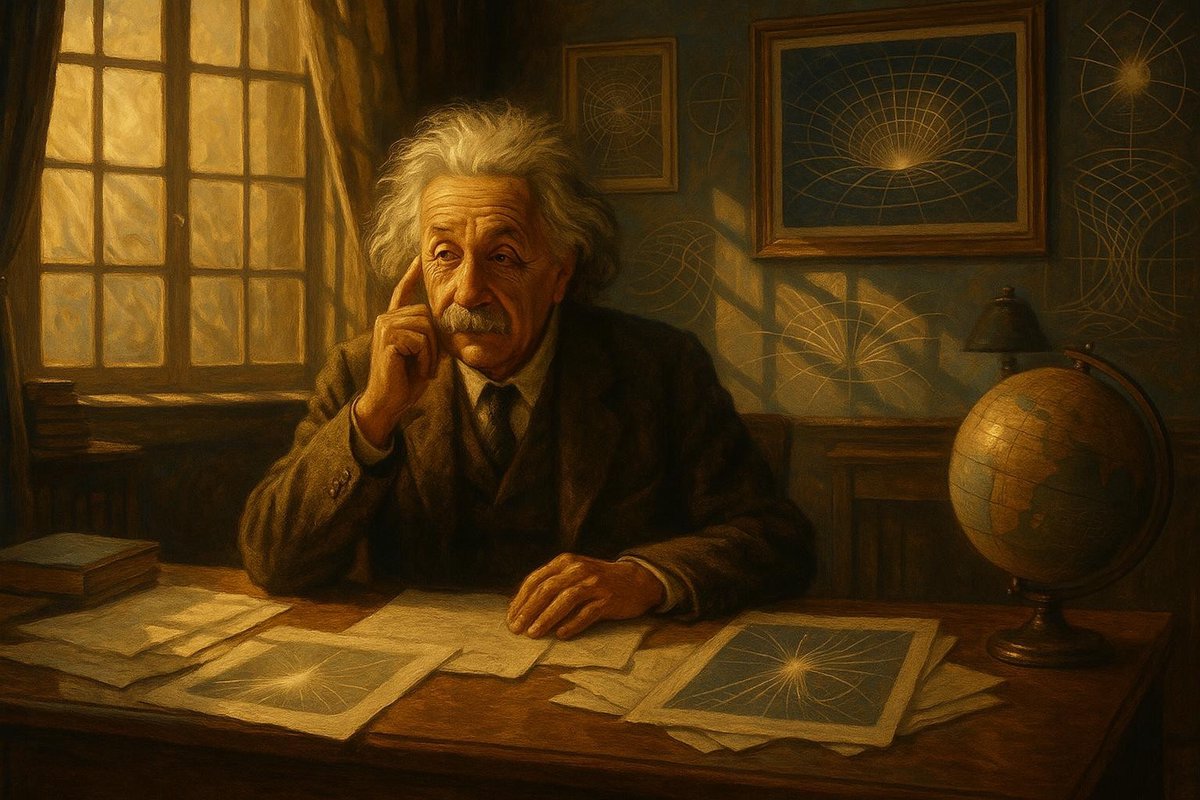
In the early 20th century, a young patent clerk in Switzerland was about to revolutionize the world of physics forever. Albert Einstein, with nothing but the power of his imagination, conceived ideas that would unravel the mysteries of the universe. His theory of relativity was not born in a laboratory but in the realm of thought experiments, challenging the traditional ways we perceived time and space. Many people believe that these mental exercises were mere musings, but they turned out to be scientific breakthroughs that continue to shape modern physics. But how did Einstein’s thought experiments pave the way for such a monumental shift?
The Origin of a New Perspective
The universe, as understood in the 19th century, was a place of absolute frames of reference. Isaac Newton’s laws painted a picture of time as a constant river, flowing uniformly for all observers. But by the dawn of the 20th century, whispers of change began to circulate.
- Newtonian Physics: The prevailing belief was that time and space were separate entities, with time ticking steadily and uniformly across the universe. But Einstein saw beyond this.
- Michelson-Morley Experiment (1887): This pivotal experiment failed to detect the ether, a mysterious medium believed to carry light waves, hinting that the current understanding of physics might be flawed.
Interestingly, it was this environment of questioning and curiosity that allowed young Einstein to ponder the nature of light and its speed. He imagined chasing a light beam, a radical concept that would soon become a cornerstone of his theories. No wonder the stage was set for a dramatic shift in our understanding of the cosmos.
Key Figures: Einstein’s Solitary Genius
While Einstein stood at the forefront of this intellectual revolution, he was not alone in his quest. The scientific community buzzed with new ideas, though many did not fully grasp the implications of Einstein’s work.
- Albert Einstein: Working as a patent clerk in Bern, Switzerland, Einstein had the unique freedom to ponder theoretical problems without the pressures of academic life, allowing his creativity to flourish.
- Max Planck: A prominent physicist who initially resisted Einstein’s ideas, Planck eventually became an ally, recognizing the potential of relativity to transform physics.
Of course, Einstein’s thought experiments were pivotal. Imagining himself on a train moving at the speed of light, he realized that time would appear to stop, challenging the notion of absolute time. This thought experiment, among others, helped him formulate the revolutionary ideas that would later be published in 1905 as the Special Theory of Relativity. As time goes on, the community would come to embrace the genius of Einstein’s theories.
The Turning Point: Relativity Takes Center Stage
The year 1915 marked a dramatic turning point. Einstein introduced his General Theory of Relativity, expanding on the concepts of his earlier work. The scientific community and the world at large were about to witness a paradigm shift.
- 1915 Publication: Einstein’s General Theory of Relativity proposed that gravity was not a force, as Newton had described, but a curvature in spacetime caused by mass.
- Eddington’s Expedition (1919): The Royal Astronomical Society’s expedition confirmed Einstein’s predictions during a solar eclipse, showing that light bends around massive objects.
This validation was a turning point, proving that Einstein’s theories were not just theoretical musings but real descriptions of the universe. The idea that space and time could be intertwined was almost unimaginable, yet it was here to stay. Einstein’s ability to marry complex mathematics with profound thought experiments had reshaped the very fabric of science.
Impact on the World: A Legacy of Innovation
Einstein’s theories extended far beyond the realm of academic physics; they influenced various aspects of society and technology, laying the groundwork for future innovation.
- Technology: GPS technology, critical for navigation systems, relies on adjustments for relativistic effects, a testament to the real-world applications of Einstein’s theories.
- Cultural Influence: Einstein became a cultural icon, symbolizing genius and challenging authority, inspiring generations to think beyond the conventional.
The impact of Einstein’s thought experiments continues to be felt today. They have not only deepened our understanding of the universe but have also inspired countless innovations. As we continue to explore the cosmos, the theories Einstein developed in the quiet of his mind remain a guiding light for scientists and dreamers alike.
Conclusion: Albert Einstein once remarked, “Imagination is more important than knowledge.” This philosophy guided his revolutionary work on the theory of relativity, transforming our understanding of the universe. Thought experiments, the brainchild of Einstein’s imagination, not only unraveled the mysteries of spacetime but also laid the foundation for modern physics. Today, as we stand on the shoulders of this giant, we are reminded of the power of curiosity and the endless possibilities it holds.
Fuel Someone Else’s Curiosity: Inspired by Einstein’s journey? Share this article with friends and fellow science enthusiasts. Let’s continue to explore, question, and imagine the endless possibilities that science offers. Who knows? Perhaps your curiosity could spark the next great discovery.

Leave a Reply